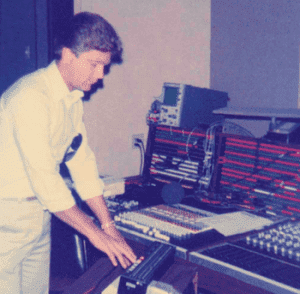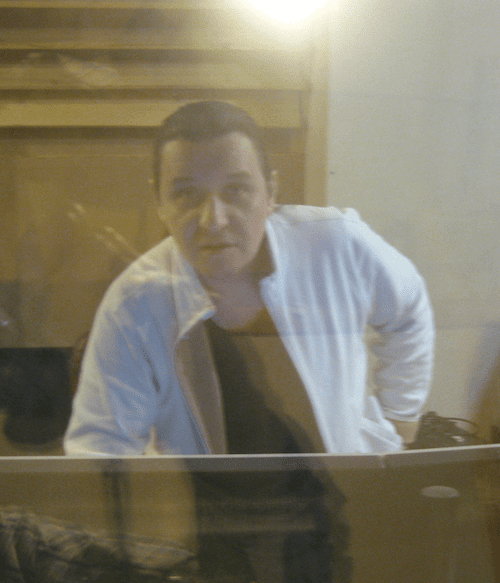SOLO Alto Saxophone Library
I just got this outstanding instrument, and highly recommend it to any musician looking for a truly realistic sax VST. Perfect for both studio and live applications, its wide range of articulations and ease of use are unrivalled-especially at this price.point. My advice:lose the sax diva who was always late for the sessions, and get this. You won’t regret it.
P.S. This is unsolicited. I just REALLY think this is a great tool for musicians.
Samples SaxBand Library
The idea behind SAXBAND is based on the principle of creating a library of Mid-Side stereo signals and maintaining the signal in this form until exiting the sampler as a “decoded” stereo sample.
The first stage was sampling. The Mid-Side technique required a single stereo pair of microphones, one in a cardioid pattern and the other in a figure-eight pattern (bi-directional). The cardioid mic-essentially a mono-component- was aimed at the saxophone being recorded and the figure-eight mic is placed at relative 90°angle, and as close as possible to the cardioid mic to minimize comb filtering caused by differences in arrival time.
The figure – 8 mic channels-one out of phase with the other getting its polarity reversed – are then panned right and left. The Cardioid mic is panned center, and balanced with the two figure – 8 channels thereby creating a natural-sounding in-phase stereo image.
Thus, after much trial and error the correct selection and positioning of microphones was achieved, and the libraries samples were produced. Great efforts were made to provide the user with the necessary tools to recreate the multiple dynamic nuances existing in a “real” live saxophone performance. Details may be found in the library’s documentation.
The second stage was programming the samples and software script writing (in this case for The Kontakt sampler). What sets the programming of SAXBAND apart from other libraries is that throughout all the manipulations of the sound in the program environment, it remained in the form of MID and SIDE components instead of left and right as in conventional libraries. The software was designed to manage these signal flows independently, and as a result, faithfully maintains the sonic properties of the concert hall and the instrument in that unique space. The result of this approach is noticeably different from simply adding reverb to a mono source.
The third phase of the work was the design/production of the software instrument itself. A low-latency, intuitive interface combined with user-friendly tools provide you with the ability to conveniently access and “tweak” a variety of “finishing touches”- toggling them with the buttons on the GUI’s Panel, and hot keys/notes in the lower octaves. Each tool controls MID and SIDE components. As a result, the user has a normal stereo signal sampler sent to the mixer, as in any other software instrument. SAXBAND libraries provide the user with an elegant and varied sonic palette, while remaining surprisingly simple to use.
CMusic Saxband Review
CMusic’s SAXBAND is a new a collection (Soprano, Alto, Tenor and Baritone) of saxophones for full-version Kontakt 5 that will instantly supply your composition with an affordable alternative to the never-on-time-for-the-session/creatively-temperamental/I-can’t-afford-you sax-playing diva you wish that you had on-call!
The instruments (unlike other sax libraries) are available for individual, “solo” purchase at a very reasonable price. However, the price break on the bundle makes it most attractive.
Its creator – Vladimir Kuznetsov – has obviously labored long and hard to provide a product that achieves that fine balance between a generous variety of articulations (legato, staccato, marcato, swells, runs, flutter, trills, vibrato, solo/poly, slides etc.) and “out-of-the-box” ease of use.
Unlike most “orchestral” or “session” libraries that include saxophones, Saxband instruments are mic’ed with an initial sound that can, with or without the included convolution reverb/EQ/compressor, give your performance a sound that is anything from an intimate studio to a “rockin’-in-your-face” sound stage, to a smoky jazz club and all the in-betweens. Give the sax the “feel” that YOU want – not what somebody else thinks the finished sound should be!
SAXBAND provides the realism lacking in other sampled sax libraries, by preserving things like the sounds of the player’s breath and the subtle clicking of the valves – so often lost by over- processing the samples.
The manual is, like the instruments, straight forward and easily understood. (Available on their website) Frankly, these instruments are so intuitive, you won’t need the manual.
SAXBAND is deeply sampled, and so takes a moment or two to load into Kontakt. But, the brief wait is worth it. You can download demo versions to try before buying. I think that you will find Saxband instruments to be created with great care and amazing attention to detail. NO big learning curve involved here: Just load it and let the creative process flow!
Conclusion!
Will your first sax solo with a SAXBAND instrument sound like Coltrane, Dulfer or Koz? That pretty much depends upon you. But, one thing is for certain: these saxophones won’t stand in the way – in fact, quite the opposite. Hard to find any fault here. I believe this to be an affordable, high quality, easily playable, convincingly realistic product that will quickly become a regularly-used part of your musical toolbox.
So, what are you waiting for? Here’s your chance to make some “Saxy” music!




